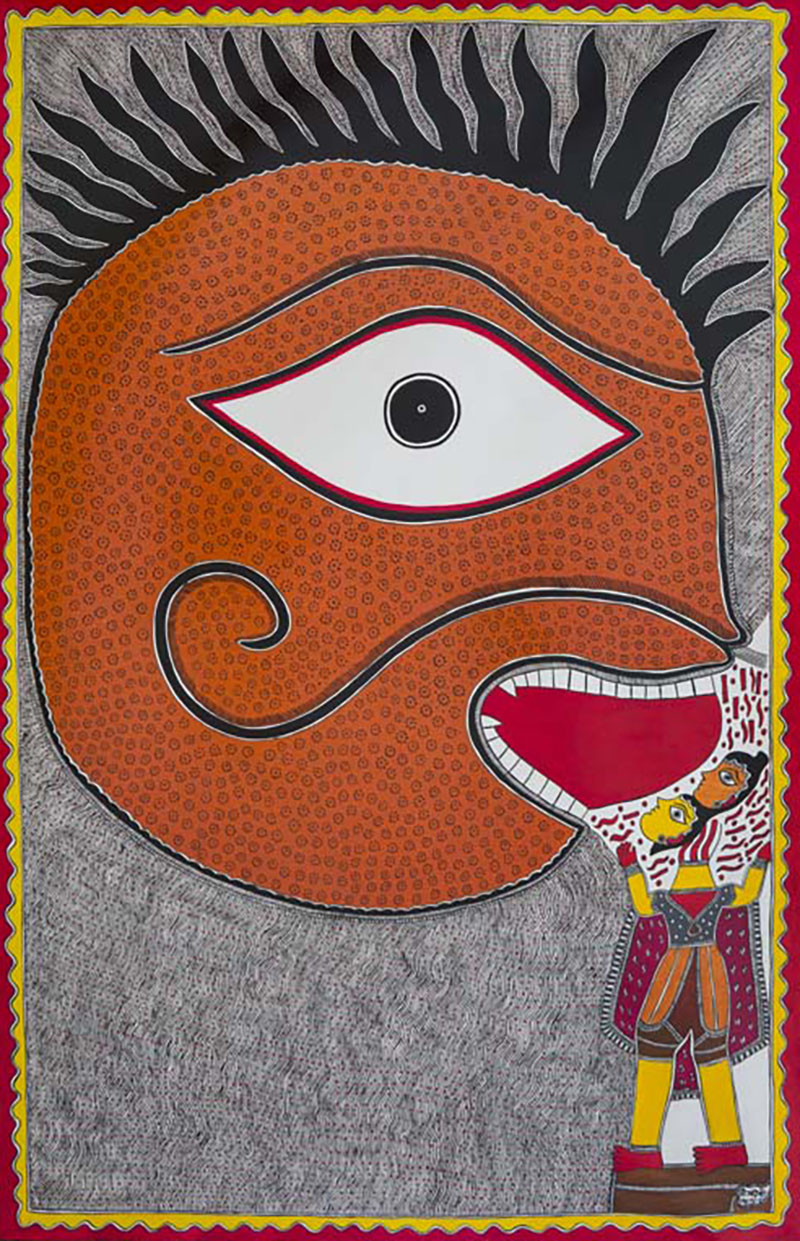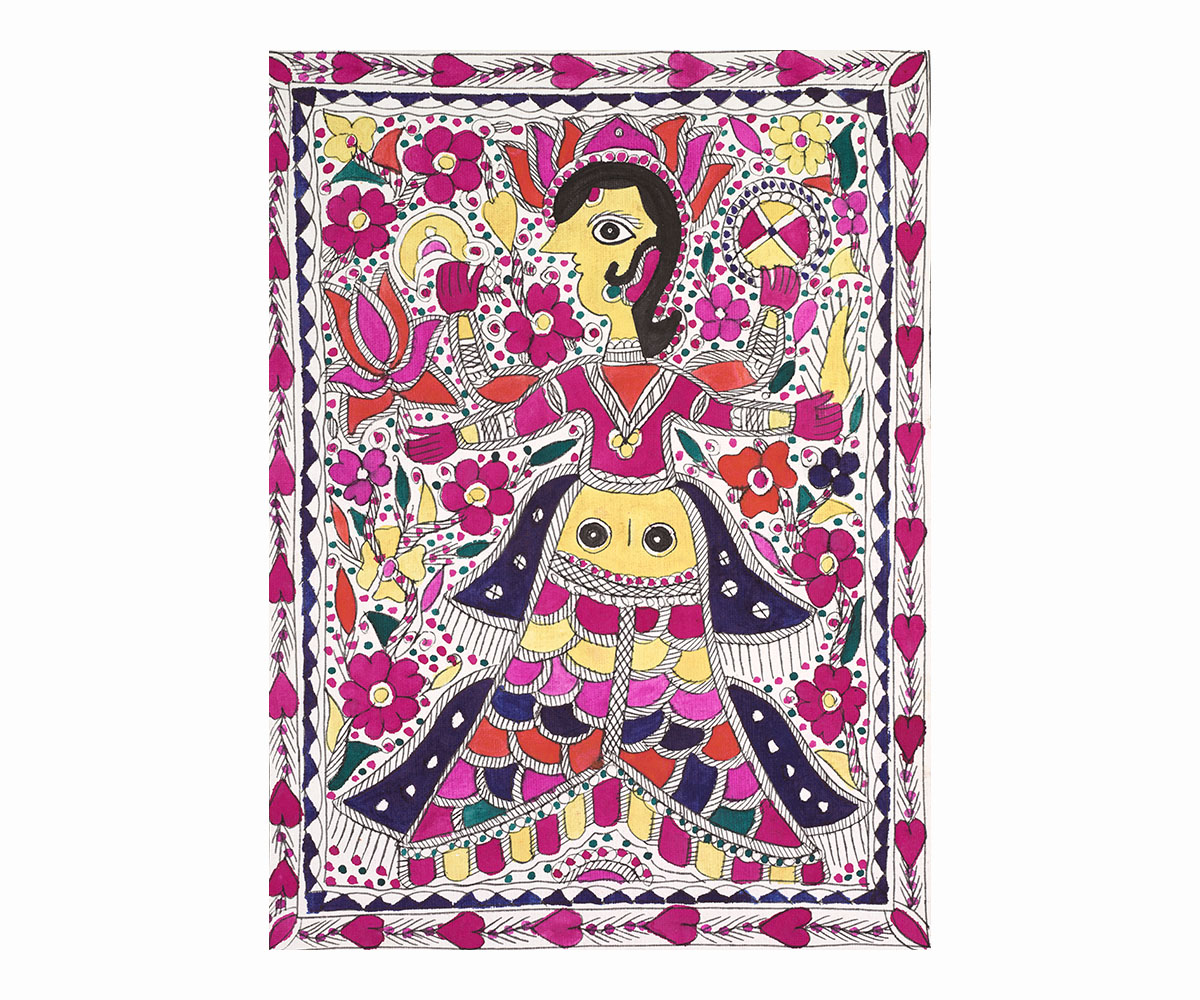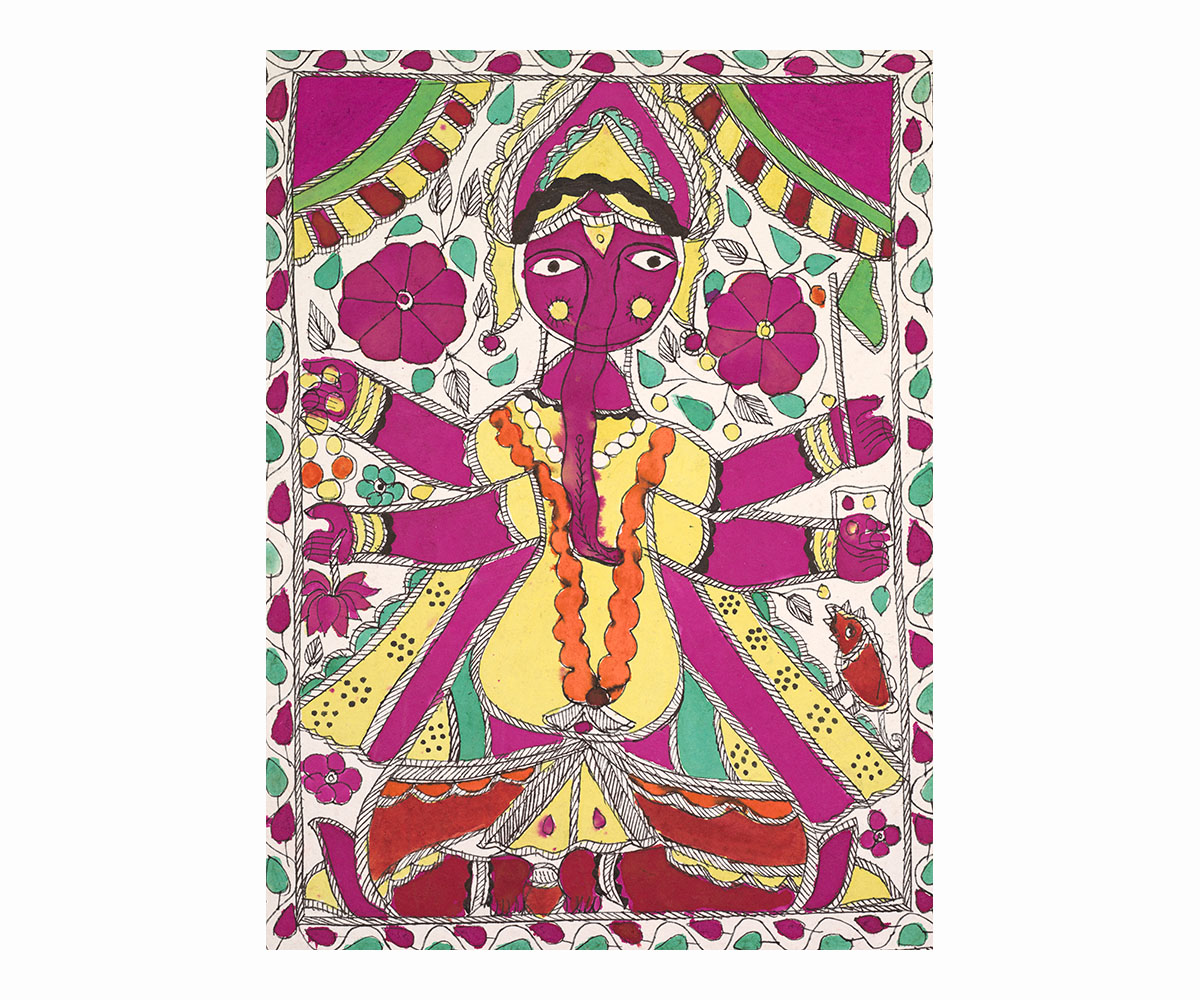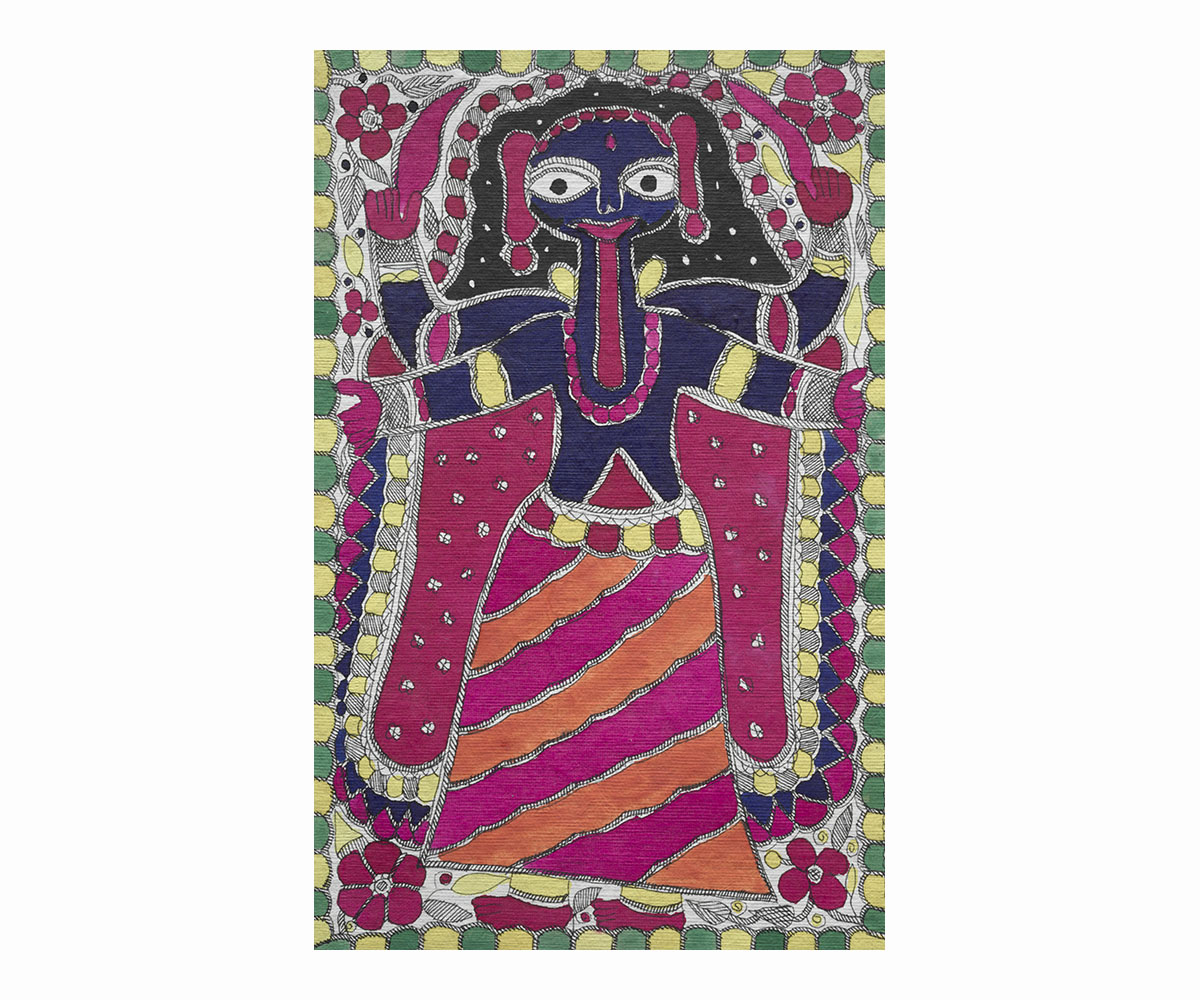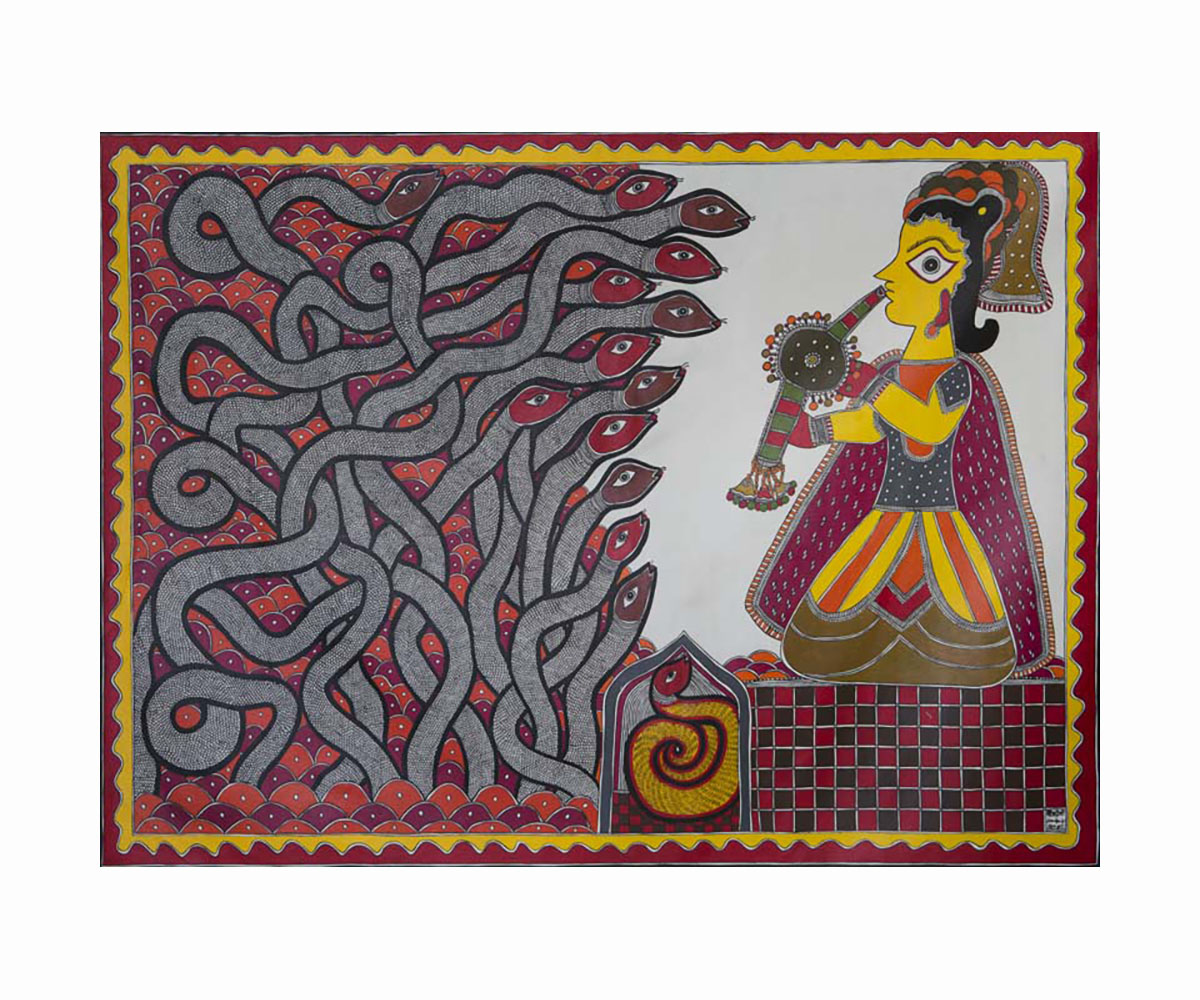ARTICLE
Madhubani Painting
Each family of Madhubani artists has its own style, which is usually handed down through the generations and retained within the family. For this reason, Mithila paintings remained confined to the inner walls of homes and were largely unknown until the Bihar earthquake of 1934, when WG Archer, a British colonial officer stationed in the Madhubani district, encountered the paintings in the wreckage of the houses destroyed by the event. Over the years that followed, Archer published his findings and research, bringing Madhubani painting into the public eye.
In 1966, most of the districts in the Madhubani region were hit by severe drought. In order to provide a source of non-agricultural income to the affected communities, then-chairperson of the Handloom Handicrafts Export Corporation Pupul Jayakar developed a drought relief program which encouraged the women of the region to make their paintings on handmade paper for commercial purposes. Jayakar also documented and outlined the various styles of Madhubani painting as well as unique motifs such as the kohabar, a lotus leaf pierced by a bamboo shoot considered symbolic of fertility. The ensuing popularity of these paintings on paper attracted scholars to the region, who began to study the art form in depth. Early scholarly interpretations of the Madhubani style and motifs – including those by Archer – tended to be Orientalist in nature, with the paintings being considered “primitive” or child-like on the one hand and democratic and diverse on the other. These interpretations also positioned the tradition as a caste-based form championed solely by Brahmin and Kayastha women, when historically Madhubani paintings had been made and practised by diverse groups, including lower caste communities.
With inputs from Indian scholars, distinct styles began to be recognised within the larger framework of Madhubani paintings, such as bharni, which is marked by vivid colours and fewer lines. Kachni or line painting comprises patterns filled with intricate line strokes, made with fine-nibbed pens, and marked by clear outlines. The gobar and godna traditions developed by the Dalit Chamar and Dusadh communities respectively were also documented. The use of these techniques and styles, however, has been fluid, with artists learning from and adopting the techniques of their peers. Thematically, while religious subjects remain a central part of the Madhubani painting vocabulary, Dalit groups have also made paintings featuring figures from local oral epics, such as Raja Salesha, Rahu and Govinda.
Today, Madhubani painting is practised by men and women across communities, and while the work of upper caste artists such as Ganga Devi have gained renown, Dalit artists have also been recognised. This includes Jamuna Devi, who received a National Award from the Government of India, and Seewan Paswan and Shanti Devi, who painted a series of stories about Raja Salhesa between 1978 and 1982.
Several international scholars also have contributed to the documentation and development of Madhubani painting, including Erika Moser from Germany, whose films document the godana tattoo art practised by Dalit artists Chano Devi and Palti Devi; American anthropologist Raymond Lee Owens, whose Ethnic Arts Foundation (EAF) trains young artists in Madhubani painting; and Tokio Hasegawa, who set up the Mithila Museum in Japan in 1989, focussing on the acquisition, display and research of Mithila painting.
Over the last few decades, the subject matter of Madhubani painting has expanded considerably, with artists tackling themes such as gender justice, environmental conservation and contemporary politics. The art form has also seen increasing commodification, with Madhubani paintings and motifs appearing on clothing, home decor and other goods. Noteworthy Madhubani artists include Mahasundari Devi, Sita Devi, Jagdamba Devi, Baua Devi, Dulari Devi and Godavari Datta among others.
Bibliography
Our website is currently undergoing maintenance and re-design, due to which we have had to take down some of our bibliographies. While these will be re-published shortly, you can request references for specific articles by writing to hellomapacademy@map-india.org.




